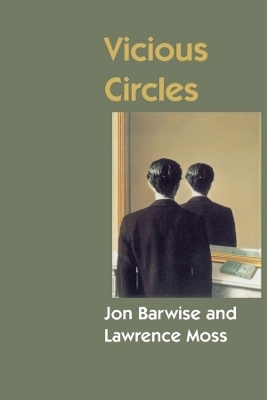
Vicious Circles
Centre for the Study of Language & Information (Verlag)
978-1-57586-008-4 (ISBN)
Circular analyses of philosophical, linguistic, or computational phenomena have been attacked on the assumption that they conflict with mathematical rigour. Barwise and Moss have undertaken to prove this assumption false. This volume is concerned with extending the modelling capabilities of set theory to provide a uniform treatment of circular phenomena. As a means of guiding the reader through the concrete examples of the theory, the authors have included many exercises and solutions: these exercises range in difficulty and ultimately stimulate the reader to come up with new results. Vicious Circles is intended for use by researchers who want to use hypersets; although some experience in mathematics is necessary, the book is accessible to people with widely differing backgrounds and interests.
Jon Barwise (1942-2000) was professor of philosophy, mathematics, and computer science at Indiana University and one of the founding members of the Center for the Study of Language and Information (CSLI). Lawrence S. Moss is professor of mathematics; director of the Program in Pure and Applied Logic; an adjunct professor of computer science, informatics, linguistics, and philosophy; and a member of the Programs in Cognitive Science and Computational Linguistics, all at Indiana University, Bloomington.
Part I. Background: 1. Introduction; 2. Background on set theory; Part II. Vicious Circles: 3. Circularity in computer science; 4. Circularity in philosophy; 5. Circularity and paradox; Part III. Basic Theory: 6. The solution dilemma; 7. Bisimulation; Part IV. Elementary applications: 8. Graphs; 9. Modal logic; 10. Streams; 11. Games; 12. Modeling the semantic paradoxes; Part V. Further Theory: 13. Greatest fixed points; 14. Uniform operators; 15. Corecursion; Part VI. Further Applications: 16. Some applications; 17. Modeling partial information; 18. Circularity and the notion of set; 19. Conclusions and future directions.
| Erscheint lt. Verlag | 4.8.2004 |
|---|---|
| Reihe/Serie | Center for the Study of Language and Information Publication Lecture Notes ; 60 |
| Verlagsort | Stanford |
| Sprache | englisch |
| Maße | 152 x 228 mm |
| Gewicht | 554 g |
| Themenwelt | Mathematik / Informatik ► Mathematik ► Logik / Mengenlehre |
| ISBN-10 | 1-57586-008-2 / 1575860082 |
| ISBN-13 | 978-1-57586-008-4 / 9781575860084 |
| Zustand | Neuware |
| Haben Sie eine Frage zum Produkt? |
aus dem Bereich


